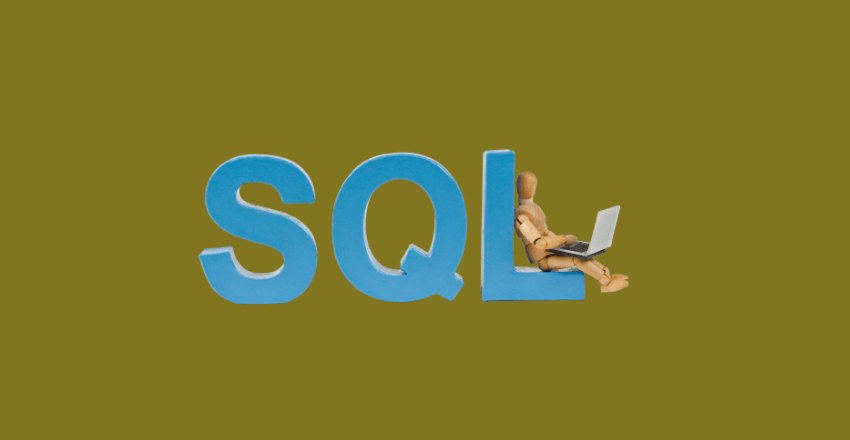
What Company Developed SQL? Embark on a historical journey to unravel the company responsible for unleashing the power of SQL.
SQL: The Evolution of a Game-Changing Language
Developed by IBM: SQL, originally known as SEQUEL, was birthed in the laboratories of IBM during the 1970s. The aim was to create a language that would interface effectively with IBM’s relational database management system (RDBMS).
Standardized by ANSI and ISO: The 1980s saw SQL gain universal recognition, with standardization by the American National Standards Institute (ANSI) and the International Organization for Standardization (ISO). Today, a variety of database management systems, including MySQL, Microsoft SQL Server, and Oracle Database, utilize SQL.
Declarative Programming Language: One of SQL’s distinct features is its nature as a declarative programming language. This means SQL clearly articulates the desired results of a computation, while the steps to achieve these results are not specified.
Consider an example SQL statement:
SELECT name FROM table ORDER BY name;This statement expresses the intent to sort the “name” column in alphabetical order. It leaves the method of sorting up to the database management system. Importantly, despite the method chosen, all SQL implementations must yield the same results for a given SQL statement.
What Company Developed SQL? Take a captivating dive into the annals of computing history to reveal the company that birthed SQL’s legacy.
SQL has three main components:
Shape Your Database with Data Definition Language (DDL): Take control of your database’s architecture by creating and modifying structures like tables and indexes – the foundation of your data ecosystem.
Interact with Your Data using Data Manipulation Language (DML): Dive into the heart of your database, inserting, updating, and deleting data, ensuring your information remains fresh and relevant.
Govern Access with Data Control Language (DCL): Master the art of authority in your database, granting and revoking permissions on database objects – the gatekeeper of your precious data assets.
DDL statements are typically used to create or modify database structures. For example, the following SQL statement creates a new table called “employees”:
CREATE TABLE employees (
id INTEGER PRIMARY KEY,
name TEXT,
salary REAL
);DML statements are used to insert, update, and delete data in a database. For example, the following SQL statement inserts a new row into the “employees” table:
INSERT INTO employees (name, salary) VALUES ('John Smith', 30000);The UPDATE and DELETE statements can be used to modify existing data in a database. For example, the following SQL statement updates the “salary” column for all employees with the last name “Smith”:
UPDATE employees SET salary = 40000 WHERE last_name = 'Smith';Finally, DCL statements are used to grant and revoke permissions on database objects. For example, the following SQL statement grants the “SELECT” permission on the “employees” table to the user “jsmith”:
GRANT SELECT ON employees TO jsmith;SQL is a powerful and versatile language that can be used to perform a wide variety of tasks on a database. In addition to the standard SQL commands, most database management systems also offer a set of proprietary extensions that add new features and capabilities to the language.
What is the History Behind SQL?

What Company Developed SQL? Discover the industry titan whose ingenuity laid the foundation for SQL’s universal dominance in data management.
Let’s take a step back in time to the 1970s, where at the heart of IBM, Dr. E. F. Codd crafted what we now know as SQL. Short for Structured Query Language, SQL is the recognized standard for interacting with and manipulating databases.
Originally, SQL’s design complemented the relational model of databases. Much like neatly organized folders in a filing cabinet, the relational model arranges data into tables. Imagine a table as a detailed directory, storing key information – a list of employees with their respective contact details, for instance.
But, data doesn’t exist in isolation. The beauty of the relational model lies in its ability to create relationships between tables. Think of an employee linked to their manager. These links, or foreign key constraints, form the essence of relational databases. SQL was sculpted to efficiently navigate and manipulate this web of related data.
What Company Developed SQL? Uncover the technological breakthroughs and innovative spirit of the company that birthed the mighty SQL language.
Fast forward to the present, SQL has found its home in a multitude of database systems, ranging from Microsoft SQL Server to Oracle Database, and MySQL. Each system injects its unique twist into their SQL implementation, leading to slight variations from the standard.
Nevertheless, all SQL flavours share common ground. They uphold the quintessential SQL commands, granting you the power to select, update, insert, and delete data from a database. In essence, SQL remains the cornerstone of database management, irrespective of the system you adopt.
SQL’s Popularity: The Backbone of Data Management
Designed for Data Management: SQL, a special-purpose programming language, is intentionally designed for data management in relational database management systems (RDBMS), and stream processing in a relational data stream management system (RDSMS).
Its origins lie in relational algebra and tuple relational calculus, covering various data operations, including data insert, update, delete, and query, as well as schema modification and data access control.
Based on Edgar F. Codd’s Relational Model: SQL is one of the pioneering commercial languages that embraced Edgar F. Codd’s relational model. Edgar F. Codd’s groundbreaking 1970 paper, “A Relational Model of Data for Large Shared Data Banks,” significantly influenced SQL’s development.
Recognized Standard: SQL’s recognition as a standard by the American National Standards Institute (ANSI) in 1986 and the International Organization for Standardization (ISO) in 1987 has been a key factor in its popularity. Over time, the SQL standard has been enhanced to incorporate a broader set of features.
Consideration of Portability: Although SQL standards exist, it’s worth noting that most SQL code needs adjustments to ensure complete portability across different database systems.
Extensive Usage in Data-Oriented Applications: SQL is a preferred tool for database administrators and developers creating data-oriented applications. Its capabilities are leveraged for managing data in RDBMS, NoSQL systems, and RDSMS, making SQL essential for storing, retrieving, and manipulating structured data in application programs.
Supported by Major RDBMS: SQL is an integral part of all significant relational database management systems, such as IBM DB2, Microsoft SQL Server, MySQL, Oracle, PostgreSQL, and SQLite. This widespread adoption is a testament to SQL’s popularity in the realm of data management.
The Power of SQL: Unlocking Data Management Benefits

SQL: The Standard Database Query Language: Recognized as a standard database query language, SQL stands tall, backed by support from all major database management systems. Its role in data manipulation and querying is pivotal to efficient data management.
Easy Data Manipulation: With SQL, data manipulation becomes a seamless task. Whether it’s updating data records, inserting new entries, or deleting unnecessary ones, SQL simplifies these operations, offering a user-friendly interface for database handling.
Uncomplicated Data Querying: SQL shines when it comes to querying databases. It not only simplifies the process but also enhances the ability to extract precise data based on specific conditions or requirements.
A Powerful Data Management Tool: The ability to effectively manage data sets SQL apart. The power to execute complex operations with relative ease makes it an invaluable tool for businesses and individuals alike.
Widespread Support and Compatibility: As a standard database query language, SQL enjoys support from all major database management systems. This broad-based acceptance ensures that SQL can be used in various contexts and applications, making it highly versatile.
Efficiency in Data Management: With SQL, the efficiency of data management sees a significant boost. The easy manipulation and powerful querying capabilities make managing large datasets more manageable, leading to better overall productivity.
Standardization and Consistency: SQL brings standardization and consistency to database management. As a standard language recognized universally, it offers a level of predictability and uniformity, making it easier for database professionals to work across different systems and platforms.
What Are the Core Features of SQL?
SQL, or Structured Query Language, is a special-purpose programming language designed for managing data held in a relational database management system (RDBMS), or for stream processing in a relational data stream management system (RDSMS).
It is particularly useful in handling structured data where there are relations between different entities and attributes.
The core features of SQL include:
Embrace the Power of Data Definition Language (DDL): Take the helm and shape the structure of your database, crafting the tables and fields that align with your business needs.
Leverage the Flexibility of Data Manipulation Language (DML): Stay dynamic and adapt with ease – insert, update, and delete data to ensure your database reflects your current reality.
Navigate the Terrain with Data Control Language (DCL): Hold the keys to your database kingdom, control access, and govern permissions, with the ability to grant and revoke at will.
Transaction Control Statements: These statements allow users to control the changes made to the database, including committing and rolling back changes.
Who is the owner of MySQL?
MySQL is a relational database management system (RDBMS) based on the SQL programming language. It is produced by for a number of different software environments. MySQL was originally created by a Swedish company, MySQL AB, which was later acquired by Sun Microsystems. Sun was in turn acquired by Oracle Corporation in 2010.
Who Uses SQL?
Harness the prowess of SQL, a potent programming language revered by database developers and administrators worldwide. It’s your go-to tool for querying and manipulating data in relational databases, and also your trusted ally in creating and updating databases.
Why does SQL sit atop the throne of database management languages? It’s a universal language endorsed by a majority of database management systems, including titans like Microsoft SQL Server, Oracle Database, and MySQL.
Ease of use and accessibility have made SQL the darling of programmers. But its appeal extends beyond simplicity. SQL boasts an arsenal of features designed to streamline programming and elevate efficiency.
Delve deeper into SQL’s offerings, and you’ll encounter a plethora of built-in functions that transform complex data manipulation into child’s play. SQL further empowers programmers with stored procedures – reusable code blocks that can be invoked with a single call, saving precious time and effort.
Leveraging SQL for Business Success: How Does SQL Contribute?

SQL stands as a crucial computer language, instrumental in helping businesses manage data in databases. Employed widely across various database management systems – including stalwarts like Oracle, Microsoft SQL Server, and MySQL – SQL’s impact on business is significant and multifaceted.
Crafting Databases and Tables: With SQL at their fingertips, businesses can create databases and tables, enabling streamlined data storage.
Data Manipulation: SQL empowers businesses to perform crucial data operations such as insertions, updates, and deletions within their databases.
Querying and Reporting: Businesses use SQL to query their databases, extract vital information, and generate detailed reports, providing invaluable insights.
Time and Cost Savings: By automating tasks that would traditionally be manual, SQL provides businesses with considerable time and cost savings while minimizing the risk of errors.
Data-Driven Decision Making: SQL helps businesses decode their data to identify trends and patterns. This helps inform critical decisions such as product offerings, pricing strategies, and identifying optimal locations for new stores.
Gaining Competitive Edge: By harnessing SQL, businesses can maximize data utilization and expedite decision-making processes, thereby gaining a competitive edge in the market.
What are the Limitations of SQL?
SQL is used by a large number of database management systems, including MySQL, Microsoft SQL Server, Oracle, Sybase, DB2, Access, and more.
Each database management system has its own SQL dialect. However, most of them support the standard SQL commands, such as SELECT, INSERT, UPDATE, DELETE, etc.
SQL’s Boundaries: Exploring the Limitations
What Company Developed SQL? Unlock the story behind SQL’s creation as we shine a spotlight on the brilliant minds of the pioneering company.
While SQL wields considerable power, it’s not without its limitations. Let’s unravel some of these.
The Data Structure Dilemma: SQL is masterful at managing data in relational databases, but when it comes to other data structures like NoSQL databases, graph databases, or columnar databases, it falls short.
The Programming Predicament: SQL isn’t a programming language and as such, it’s not cut out for tasks demanding procedural programming, such as loops or conditionals.
The Declarative Deficiency: SQL isn’t a declarative language, meaning you must specify the steps to retrieve desired data. Declarative languages like Prolog or SQLite, on the other hand, allow you to specify the data you want, leaving the system to find the necessary retrieval steps.
The Flexibility Factor: SQL lacks flexibility in certain areas. For instance, it doesn’t support higher-order functions like map or reduce.
The Portability Problem: Programs written in SQL are bound by their platforms, limiting their portability. A program crafted in Microsoft SQL Server, for instance, won’t run on a MySQL database.
The Security Struggle: SQL’s susceptibility to security risks is another drawback. Malicious code can be injected into an SQL statement, leading to data deletion or table drops.
The Scalability Setback: Lastly, SQL falls short in scalability, making it less suited for very large databases. For example, while Facebook uses MySQL to store user data, it requires multiple servers running MySQL to manage the load.
Navigating SQL Challenges: Common Problems and Their Roots

SQL stands as a robust database query language, enabling seamless access and manipulation of data. However, even the smoothest seas can have undercurrents. When using SQL, a few common problems often surface.
The Complexity Conundrum: SQL’s depth and complexity often pose a challenge. Users sometimes grapple with comprehending the mechanics of SQL, which can lead to a steep learning curve.
The Query Quandary: Crafting SQL queries can sometimes feel like navigating a maze. SQL’s strictness, coupled with the multitude of rules to adhere to for a valid query, may lead to difficulties in writing effective queries.
The Optimization Obstacle: Another hurdle that often crops up is optimizing SQL queries. Given the power and flexibility SQL offers, pinpointing the most efficient way to optimize a query can be a daunting task.
The consequences of the above problems are as follows:
1. Data duplication:
If data is duplicated, it takes up more space than necessary and can lead to inconsistencies. For example, if two database tables contain duplicate data, and one table is updated, the other table will not be updated with the same data. This can lead to inconsistencies between the two tables.
2. Inconsistent data:
If data is inconsistent, it can lead to errors in applications that use the data. Inconsistent data can also make it difficult to find and correct errors.
3. Incomplete data:
If data is incomplete, it can lead to inaccurate results. Incomplete data can also make it difficult to find and correct errors.
4. Redundant data:
If data is redundant, it takes up more space than necessary and can lead to inconsistencies. For example, if two database tables contain redundant data, and one table is updated, the other table will not be updated with the same data. This can lead to inconsistencies between the two tables.
5. Incorrect data:
If data is incorrect, it can lead to errors in applications that use the data. Incorrect data can also make it difficult to find and correct errors.
So, how do you solve each of the above problems?
1. Data duplication:
To solve this problem, you need to design your database in such a way that data is not duplicated. This can be done by using normalized data structures and by using foreign keys to relate tables.
2. Inconsistent data:
To solve this problem, you need to design your database in such a way that data is consistent. This can be done by using normalized data structures and by using foreign keys to relate tables.
3. Incomplete data:
To solve this problem, you need to design your database in such a way that data is complete. This can be done by using mandatory fields and by using default values for optional fields.
4. Redundant data:
To solve this problem, you need to design your database in such a way that data is not duplicated. This can be done by using normalized data structures and by using foreign keys to relate tables.
5. Incorrect data:
To solve this problem, you need to design your database in such a way that data is correct. This can be done by using validation rules and by using foreign keys to relate tables.
Exploring the Database Landscape: What Lies Beyond SQL?
What Company Developed SQL? Journey into the realm of data management and uncover the visionary company behind the creation of SQL.
SQL stands as a trusted standard for storing, manipulating, and retrieving data in databases, with various types of SQL providing diverse features and capabilities. Yet, the world of databases extends beyond SQL, presenting a host of intriguing alternatives.
NoSQL – The Scalable Choice: Ditching the traditional table-based structure of SQL databases, NoSQL offers a flexible alternative that scales with ease. A favourite among big data applications, NoSQL carves its own path.
NewSQL – The Hybrid Powerhouse: Imagine blending the best of SQL and NoSQL – that’s NewSQL. Designed to be scalable and support high-performance applications, NewSQL brings together the best of both worlds.
Graph Databases – Traversing Data with Speed: Enter the world of graph databases, a unique breed that relies on a graph data structure to store data. When the need is to zip through large data sets swiftly, graph databases shine.
The database universe is vast and varied, brimming with options, each boasting its unique set of features and capabilities. Navigating this universe to select the right database for your application might seem daunting. But with an understanding of the diverse options at your disposal, you’re equipped to make an informed decision that meets your specific needs.
FAQS – What Company Developed SQL?

SQL is a powerful programming language that is widely used for managing databases. Despite its popularity, there are still many misconceptions about SQL.
Is SQL belong to Microsoft?
No, SQL is not owned by Microsoft. SQL is a standard programming language that is developed and maintained by an international standards body. Microsoft SQL Server is a proprietary database management system that is based on the SQL standard.
What is SQL and who owns it?
SQL is a powerful programming language that is widely used for managing databases. Despite its popularity, there are still many misconceptions about SQL. In this blog post, we will answer some of the most frequently asked questions about SQL.
SQL is a standard programming language that is developed and maintained by an international standards body. Microsoft SQL Server is a proprietary database management system that is based on the SQL standard.
Tracing SQL’s Journey: Past, Present, and Future – What Company Developed SQL?
What Company Developed SQL? Journey back in time to unveil the birthplace of SQL and the company that forever transformed the data landscape.
Let’s journey back to the 1970s, where nestled within IBM, American computer scientist Edgar F. Codd gave birth to the original version of SQL. Recognized as a standard database query language, SQL earned its place in the core of mainstream relational database management systems (RDBMSs).
However, with the passage of time, SQL encountered a wave of criticism. Tagged as “unsafe” and “insecure”, SQL faced the brunt of issues such as the infamous SQL Injection attack, a significant thorn in the side of web applications reliant on SQL.
On another front, SQL’s inability to comfortably handle large-scale data analysis became apparent. The absence of MapReduce style programming support raised questions about SQL’s suitability in an increasingly data-heavy world.
Yet, even in the face of criticism, SQL stands tall as the most extensively utilized database query language. Its reign seems set to continue in the foreseeable future. Nevertheless, the growing consensus is clear – SQL needs to evolve to cater to the demands of contemporary applications.
What Company Developed SQL? Follow the trail of innovation to find the answer as we unravel the origins of SQL’s development company.
The future of SQL could unfurl in several directions. One possibility is to transform into a more robust data analysis platform, welcoming MapReduce style programming and other elements that facilitate large-scale data analysis.
Alternatively, SQL could aim to become more user-friendly, simplifying its usage for beginners and bridging the gap with popular programming languages like Python and Java.
Regardless of the path SQL treads, it’s evident that evolution is necessary to ensure SQL remains relevant and effective in addressing the requirements of modern applications.
James is a highly acclaimed author renowned for his extensive experience in the realm of data development and architecture, offering valuable insights to the data industry through his compelling literary works. Residing in the charming city of Oxford, he embarked on an illustrious academic journey at Oxford University, where he delved into the intricate world of computer science. This foundation served as the catalyst for his exceptional career.
After completing his studies, James embarked on a professional path that led him to renowned technology giants. He first honed his skills as a data developer at Microsoft, where he showcased his prowess in designing and implementing robust data solutions. His innovative contributions played a pivotal role in enhancing data management processes, solidifying his reputation as a meticulous and forward-thinking professional.
Seeking new challenges and broader horizons, James embarked on a transformative journey at Amazon Web Services (AWS). In this influential position, he leveraged his profound understanding of data architecture to shape cutting-edge solutions for clients. His leadership and technical acumen enabled businesses to harness the power of cloud computing and revolutionize their data management practices, further solidifying his status as an industry authority.







